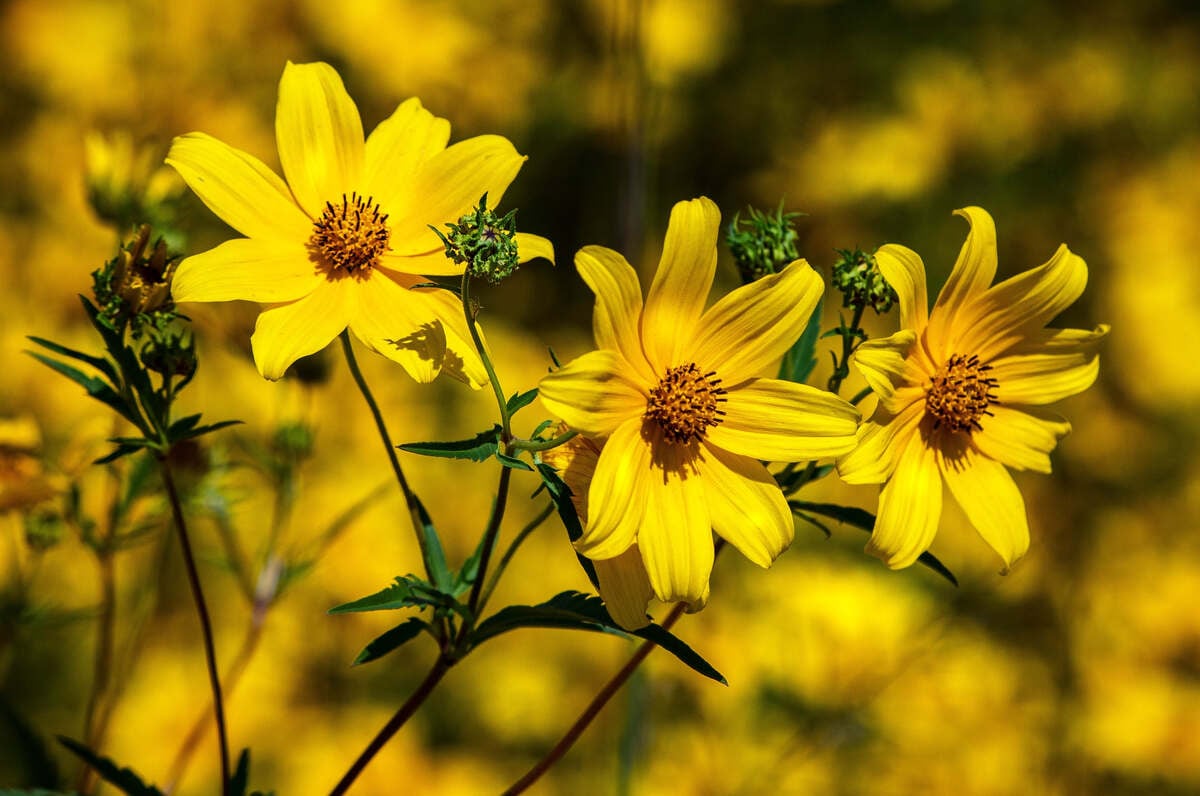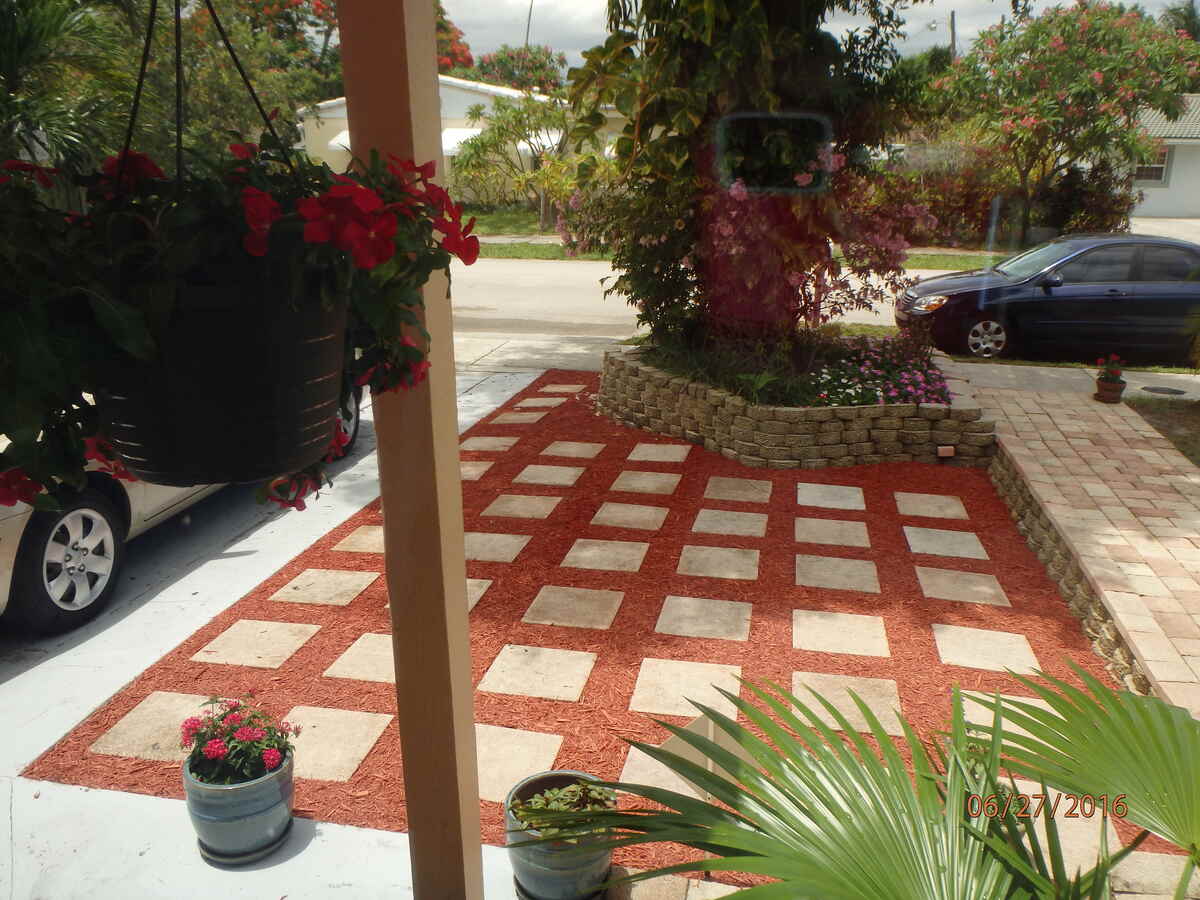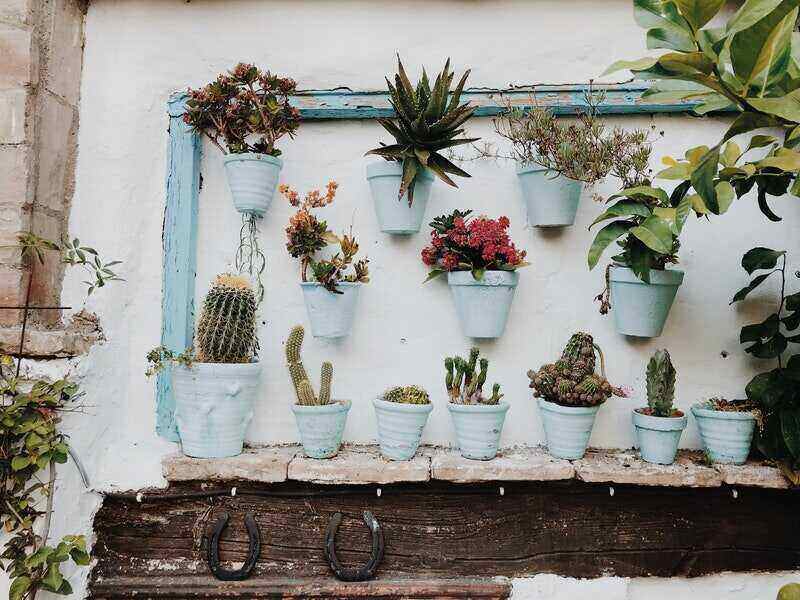
Ask a group of landscapers or gardeners how they feel about using landscape fabric, and you’ll likely hear a few strong opinions. Is it really worth all the hype, or does it sink under the weight of its weed-free gardening expectations? We’ll discuss the pros and cons of landscape fabric to help you decide what works best for your landscape.
What is Landscape Fabric?
Landscape fabric goes by many names:
- Plastic mulch
- Poly mulch
- Synthetic mulch
- Weed barrier fabric
- Weed block fabric
- Weed control fabric
- Woven ground cover
- Woven weed barrier
No matter what you call it, landscape fabric is often promoted as the solution to the bane of every gardener’s existence — weeds. Not only does it supposedly block unwanted weed growth, but best of all, you don’t have to worry about weeding for what seems like years.
Unfortunately, and like with many advertised products, this isn’t exactly true.
Landscaping fabric definitely has its pros and cons when it comes to its use.
Types of Landscape Fabric
Landscape fabric usually comes in one of three materials:
- Polyester
- Polyethylene, aka plastic, clear or black. Note: Clear plastic won’t control weeds.
- Polypropylenes (spun or woven fabric)
Woven fabrics, spun or bonded fabrics, and solid sheets of plastic are all common. Want to save time? Some have holes pre-made for planting. The permeability of each will vary depending on the thickness and method of construction, so check the label before you buy.
If you’d like to read more in-depth on this topic, check out our article on Landscape Fabric Types and How to Use Them
Pros of Landscape Fabric
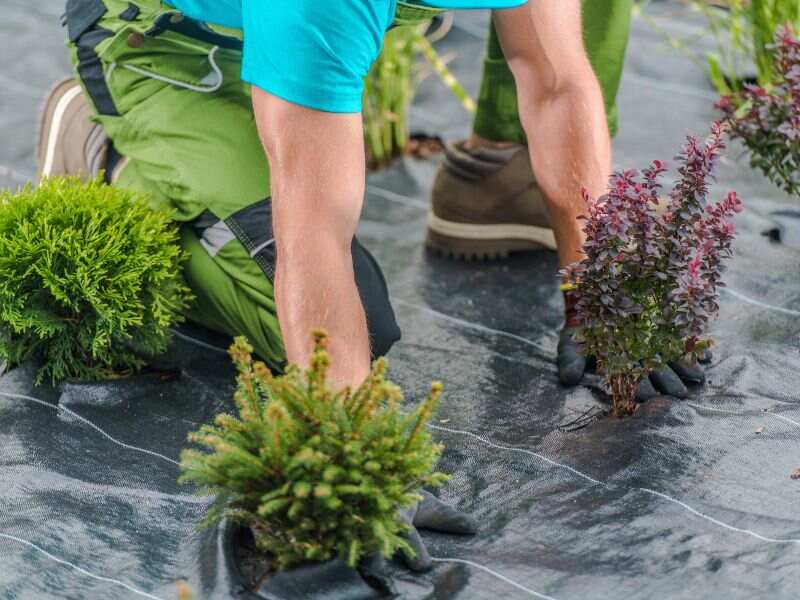
Some of the benefits of using landscaping fabric include:
✓ Keeps inorganic mulches like rocks from sinking into the soil. Landscape fabric helps to stabilize the soil, in other words.
✓ Prevents weed seeds covered by fabric from sprouting.
✓ Reduces the need for herbicides.
✓ Works well on slopes where erosion control is a problem. (This is another application for its soil stabilizing properties.)
✓ Helps the soil retain moisture and slows evaporation.
✓ You can choose from many different materials and thicknesses, which makes it customizable for different projects. Also, the variety of choices means you can control your costs, buying the right type of material for each project or area of your lawn.
✓ Warms the soil in winter. Clear plastic increases soil temps by up to 9 degrees Fahrenheit, black plastic by about 5 degrees, and polypropylenes by about 2 degrees.
✓ A popular product that can be found at most any garden center, superstore, or online retailer.
If landscape fabric is the right choice for your garden or other yard project, you’re ready to learn How to Install Landscape Fabric (in Nine Easy Steps).
Cons of Landscape Fabric
Some of the cons of using landscaping fabric include:
✗ Over time, decomposing particles of mulch and soil clog the perforations in the cloth. As the fabric becomes clogged, adequate amounts of water and air are unable to to reach the plant roots, leading to the plant’s decline.
✗ Earthworms, which aerate the soil, don’t develop, leading to compacted and unhealthy soil.
✗ The fabric acts as a barrier to organic materials biodegrading in the soil, which leads to an unhealthier soil structure.
✗ Weeds can still grow in the mulch on top of the fabric.
✗ Landscape fabric is time-consuming to install, especially around existing plantings.
✗ Depending on the size of the area and the thickness of the material, it can be an expensive project. Organic mulches, such as grass clippings and mulched leaves are free and contribute to soil health as they break down.
Alternatives to Landscape Fabric
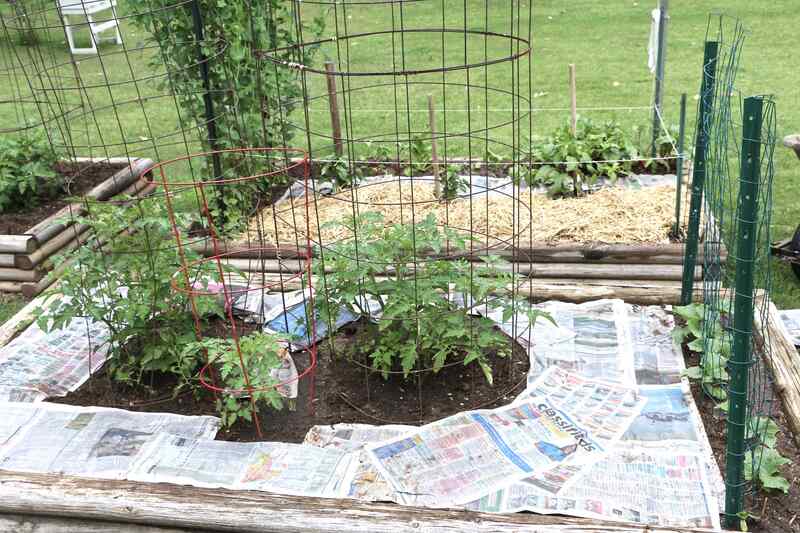
If these downsides to landscape fabric have you rethinking your options, there are landscape fabric alternatives to consider:
- Cardboard (a great option for sheet mulching to remove part of your lawn)
- Ground cover plants
- Ground cover plants that flower
- Ground cover plants that work well in the shade
- Newspaper
- Organic mulch, such as wood chips, straw, burlap, pine needles, grass clippings, shredded leaves, and compost. Organic mulches decompose, adding valuable nutrients and organic matter to the soil.
In general, organic mulches are more cost effective (or free) and already available in one’s own lawn.
Is Landscape Fabric the Right Choice for Your Project?
If used properly and in the best situations, landscaping fabric does have its benefits, but it also has its drawbacks.
The good: Landscape fabric works for a time in reducing weeds in an area. It generally works as a weed barrier for a year or less before its usefulness starts declining.
The bad: The unwanted growth eventually rears its ugly head despite the weed barrier. Over time, you also end up with soil that isn’t as healthy, which can affect your plants and their health.
In fact, according to the University of Florida, the long-term use of landscape fabric can negatively affect soil and plant health and is best used where ornamental plants aren’t growing like pathways or around mailboxes.
The bottom line: Landscape fabric is an effective, short-term weed control solution but has deleterious long-term effects on soil health.
FAQ About Landscape Fabric
The best alternatives to landscape fabric are:
● Cardboard
● Free mulch from your city
● Grass Clippings
● Ground cover plants
● Newspaper
The best mulch for flower beds is something that is attractive and will help reduce moisture loss. Most types of wood mulch (bark, shredded, wood chips) are attractive and also help maintain moisture around the roots of your plants.
Anything that’s free that you already have around the house works well. Cardboard, newspaper, and shredded leaves (in the fall) help prevent weeds so your annual veggies can thrive.
In commercial production, black plastic mulch is a popular option for certain crops. For homeowners looking to save a few bucks, readily available options such as newspaper or cardboard are more commonly used.
When to Call a Landscaping Professional
If you are unsure about landscape fabric or just a little antsy about the size and work involved in your garden or yard project, call a landscaping service near you. The pros will be able to answer your questions, help plan your project, and take all the work off your hands.
Main Image Credit: Irina274 / Cannva Pro / License
